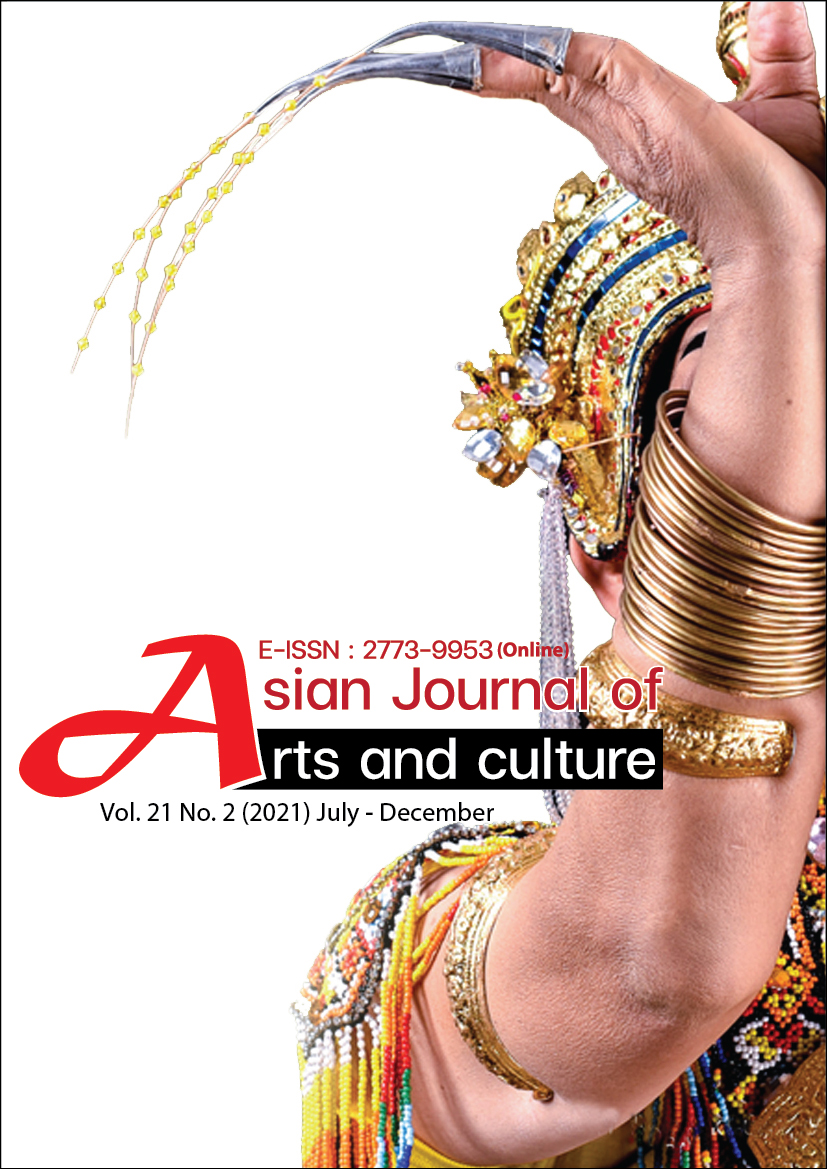A Qualitative Study of Grandparents lullaby: Wisdom of the elderly for Early Child development through Northern-Khmer Child Rearing Cultural Transmission Process in Community way of life
Main Article Content
Abstract
The objective of this research is to study the elements of the process of transmission of the Khmer language wisdom and culture of grandparents through lullabies. Culture shows beliefs, values, morals and social aspects, lifestyle, customs, language, daily living and activities of people in the community. The qualitative study was conducted with in-depth interviews of three Northern-Khmer elders and included the study the lullaby songs of the elderly in the community of CHANGWAT SURIN.
The results of this study found that the elements of the process of cultural transfer of the elderly through lullabies include five aspects, namely 1) content, 2) knowledge transfer, 3) characteristics of the transmitters and receivers, 4) methods and media and 5) evaluation. The process of transferring culture from wisdom that we can develop for the purpose of inheritance can be of various forms of recording, such as, audio recording, video recording as well as transcription in order for preservation.
Article Details

This work is licensed under a Creative Commons Attribution-NonCommercial-NoDerivatives 4.0 International License.
© 2018 by Asian Journal of Arts and Culture, Walailak University. All rights reserved.
References
Athikiat, K. (2006). Reading Rhymes and Folk Songs. Bangkok, Thailand: Department of Curriculum and Instruction, Faculty of Education, Ramkhamhaeng University.
Atthanuphan, M. L. (2018). Thai Ways of Young Children Rearing in the Thailand 4.0 Era. Journal of Education Studies Chulalongkorn University, 46(4), 283–299.
Baker, F., & Mackinlay, E. (2006). Sing, Soothe and Sleep: A Lullaby Education Programme for First-Time Mothers.
British Journal of Music Education, Cambridge University Press, edited by Gordon Cox and Stephanie Pitts, 23(2),147-160.
Office of the National Culture Commission. (1992). Meaning and scope of culture. Bangkok, Thailand: The Teachers’ Council of Thailand.
Phansue, A. (2003). Thau-Khmer Lullaby: A Case Study of Tayuak Village, Tambon Tungluang, Suwannaphoom District, Roi-Et Province. (Master’s thesis, (Ethnomusicology), Srinakarinwirot University, Thailand.
Tantiwong, B. & Khayankij, S. (2007). Aesthetics for preschoolers. Journal of Education Studies Chulalongkorn University, 36(1), 70–85.
Teeravut, P., & Tangdajahiran, J. (2016). The Lullaby in Pho Hak Subdistrict, Bang Pae District, Ratchaburi Province, Thailand. (Master’s Thesis, Srinakharinwirot University, Thailand).
Theeraakanit, Th.(2017).Psychology for Self-Development in Modern Society. Udon Thani, Thailand: Udon Thani Rajabhat University.
Thimachai, P., & Sikkhabandit, S. (2008). The Development of Computer Multimedia Instructions on Cultural of Rocket Festival, Blessing Ceremony and Nursery Rhymes. (Master’s Thesis, Srinakharinwirot University, Thailand).
Treeod, F., & Lehmongkol, P. (2013). Thai E – San Traditional Lullaby Songs: Value on Child Rearing. (Master’s Thesis, Kasetsart University, Thailand).
Singkaselit, T. S. (2016). Development of Child Rearing Cultural Transmission Process Based on the Local Wisdom Empowerment Theory. Burapha Journal of Medicine, 3(1), 23–39.
Subhimaros, T. (2007). Development of Northern- Khmer Child Rearing Cultural Transmission Process Based on the Local Wisdom Empowerment Theory. (Dissertation, Chulalongkorn University, Thailand).
Webb, A. R., Howard T. H., Carol B. B.,and Amir L. (2015). Mother’s Voiceand Heartbeat Sounds Elicit Auditory Plasticity in the Human Brain before Full Gestation. Proceeding of the National Academy of Science, 112 (10), 3152–3157.


